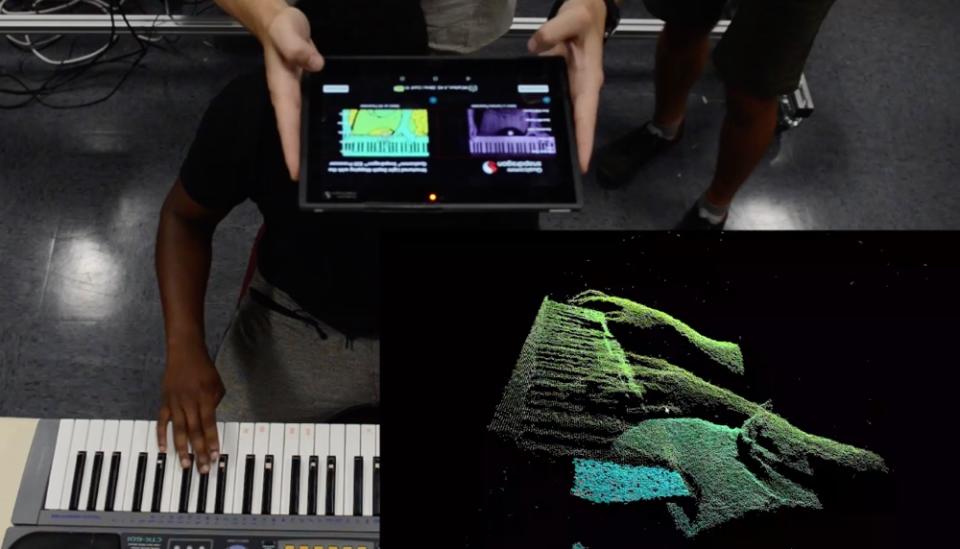Your next smartphone's camera could get a huge improvement

Your next smartphone’s camera could do more than take great pictures of your latest meal. Qualcomm (QCOM), the company that builds the processors found in a variety of Android handsets, has debuted its latest camera technology, which the chip-maker says will turn your phone into an augmented reality beast.
The tech is called active depth sensing and includes placing two cameras — one infrared and one standard — and a laser on the back of your phone. The laser, which uses an invisible infrared beam, is shot through a small cover that creates a pattern wherever you shine it.
The infrared camera, which is placed next to the normal camera, then captures that light and the resulting pattern to determine how far away the surface you’re pointing it at is. “Big deal,” you say?
That’s where you’re wrong. See, with more accurate depth-sensing technologies, augmented reality — think “Pokémon Go” and the like — will see drastic improvements. Objects will appear in space where your brain expects them to, so instead of a digital cup floating over your coffee table, it will actually sit on the table as if it were real.
To give me a better idea of how well the depth-sensing technology works, Qualcomm showed off a video of a person holding a tablet equipped with the three-camera setup shooting another person playing a keyboard.
And while the image was shot solely from above the player’s hands, the Qualcomm reps were then able to rotate the video to reveal that the depth-sensing camera was able to capture the player and keyboard in a nearly complete 3D image.
In addition to smartphones, Qualcomm says it plans to implement this technology into virtual and augmented-reality headsets. And that’s where things truly get interesting.
That’s because with such image sensing technology, Qualcomm will be able to build lightweight, wireless headsets that can see your hands without the need for external cameras like the current crop of VR headsets. So instead of having to hold a controller, you’d be able to simply use your hand as the controller.
The cameras will also allow for what’s called inside-out tracking, which lets a computer recognize how you’re moving without the need to have external tracking devices like Facebook’s (FB) Oculus Rift and HTC’s Vive.
Inside-out tracking isn’t new, though. Other headset makers like Microsoft (MSFT) and Oculus already use or are working on it as well. But Qualcomm’s plug-in play tech could give it a leg up.
Beyond AR and VR, Qualcomm says its new cameras will also be able to capture better video in low-light settings, something smartphones continue to struggle with.
Additionally, Qualcomm is working on a front-facing iris-scanning and facial-recognition camera. The company says this shooter will be able to detect “liveness” so you won’t be able to trick it by holding up a picture of a person’s eyes like the Samsung Galaxy S8’s camera.
In a somewhat unsettling video demonstration, Qualcomm showed how a mask of a person wouldn’t even be able to defeat its facial recognition tech. I saw it as unsettling because the life-like mask they used in the video looked like an absolute monstrosity. Still, it was cool to see it work.
You can expect smartphones with these new technologies to hit the market sometime next year.
More from Dan:
Google drops neo-Nazi site out of ‘immediate concern of inciting violence’
How the iPhone 8 and iOS 11 could make you a better photographer
Motorola’s Moto Z2 Force has an unbreakable screen, but it isn’t flawless
Email Daniel at [email protected]; follow him on Twitter at @DanielHowley.
